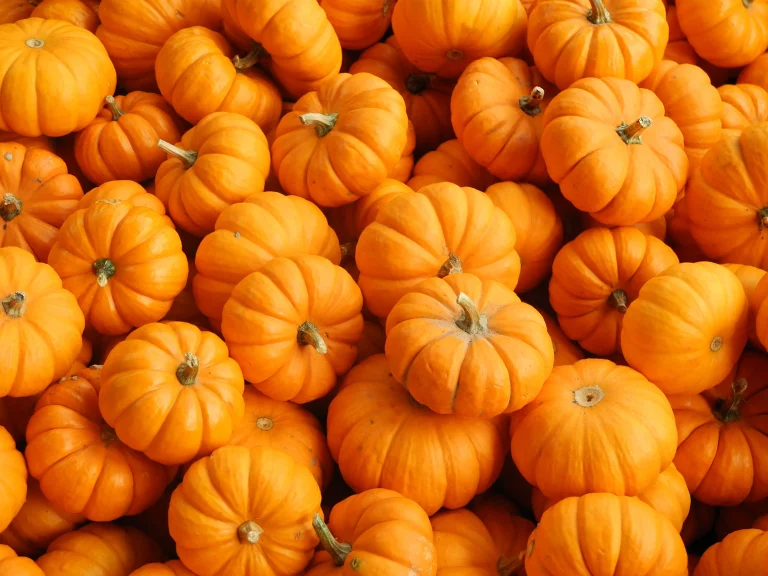Why Growing Pumpkins Is Worth the Effort
There’s something deeply satisfying about planting a seed and watching it grow into a robust, sprawling vine that delivers bright, plump pumpkins. Whether you’re looking to carve jack-o’-lanterns, bake delicious pies, or simply enjoy the beauty of your garden, learning how to grow pumpkins can be incredibly rewarding. With the right steps, you can turn your pumpkin patch into a high-yielding success story.

This guide will walk you through the most practical and effective pumpkin growing tips to help you grow pumpkins for a maximum yield, no matter your space or experience level. From selecting the right variety to optimizing soil and watering strategies, you’ll find everything you need to become a pumpkin-growing pro.
Choosing the Right Pumpkin Variety for Yield

Match the Pumpkin to Your Purpose
Before planting, think about what you want from your pumpkins. Are you aiming for small, sweet ones for cooking, or large showpieces for fall decorations? The right variety plays a major role in yield.
High-Yield Pumpkin Varieties
- Connecticut Field – Ideal for large harvests
- Jack Be Little – Great for compact spaces and abundant fruit
- Howden – Popular for jack-o’-lanterns with reliable yields
- Big Max – Produces giant pumpkins under the right conditions
Each of these varieties has specific growing needs, but with proper care and the right pumpkin cultivation methods, they all have the potential to produce large, plentiful harvests.
When and Where to Plant Pumpkins
Pumpkins are warm-weather plants that need a long growing season. Knowing how to grow pumpkins starts with understanding their environmental needs.
Timing Is Everything
- Plant after the last frost date in your area
- Soil temperature should be at least 70°F (21°C)
- Allow 75–120 days for most varieties to mature
Ideal Growing Zones
- USDA zones 3–9 are generally good for growing pumpkins
- Choose earlier-maturing varieties for cooler climates
Pick a spot that receives full sunlight and has well-draining soil—both are essential for healthy pumpkin vines.
Maximize Sunlight and Growing Space
Space to Sprawl
Pumpkin vines can spread 10–20 feet. Without enough space, you’ll limit your pumpkin production.
- Space hills 4–6 feet apart
- Use vertical trellises for bush varieties to save space
Sunshine = Bigger Pumpkins
Aim for 6–8 hours of full sun daily. Pumpkin plants thrive in sunlight, and insufficient exposure can reduce fruit set.
Prepare Your Soil for Success
Soil Requirements
- Well-draining, loamy soil is best
- Optimal pH: 6.0 to 6.8
Natural Soil Boosters
- Add aged compost or well-rotted manure before planting
- Mix in organic material to improve moisture retention and nutrients
If you’re wondering how to grow pumpkins in poor soil, improving your soil with compost and mulch is essential.
👉 If you’re looking to improve your garden yields with less effort, The Self-Sufficient Backyard can help you create a productive garden that works in harmony with nature. It’s packed with tips for soil health, water conservation, and organic techniques that boost your results season after season.
Watering Techniques to Support Growth
Water Deeply and Consistently
- Pumpkins need 1–2 inches of water per week
- Water early in the day to reduce evaporation
Use Mulch to Retain Moisture
- Apply straw or leaf mulch around the base of plants
- Helps maintain soil temperature and suppress weeds
Avoid watering leaves, as this can promote mildew. Direct water to the roots to reduce disease risk in your pumpkin plants.
Encourage Pollination for More Fruit
Bring in the Bees
Pumpkins have separate male and female flowers. Successful pollination is crucial for fruit to set.
- Plant pollinator-friendly flowers nearby
- Avoid using pesticides that may harm bees
Hand-Pollinate When Needed
If pollination is low, use a soft brush to transfer pollen from male to female flowers. You’ll recognize female flowers by the small pumpkin shape at the base.
Boosting pollination is a key step in how to grow pumpkins for high yield.
Protect Your Pumpkins from Pests and Disease
Common Pests
- Squash bugs
- Vine borers
- Cucumber beetles
Natural Pest Management
- Neem oil spray
- Diatomaceous earth around the base of plants
- Row covers during early growth
Disease Prevention
- Avoid overcrowding plants
- Rotate crops yearly
- Remove infected leaves immediately
If you want to master pumpkin pest control, these preventative steps are essential.
Prune and Train Vines for Better Yield
Why Prune?
- Controls the size of the plant
- Directs energy to fruit development
How to Prune
- Pinch off secondary vines after fruit has set
- Remove excessive leaves to increase airflow
Training vines to grow in a specific direction—either by trellis or staking—also helps prevent tangling and wasted space, maximizing your pumpkin yield.
15 Easy Ways to Grow Pumpkins for Maximum Yield

Here’s your ultimate checklist of pumpkin growing tips:
- Choose high-yield varieties suited for your region
- Warm your soil with black plastic before planting
- Start seeds indoors to extend the growing season
- Add aged compost to enrich your soil
- Water deeply, 1–2 times per week
- Mulch heavily to retain moisture and suppress weeds
- Space your plants correctly to avoid competition
- Prune vines to focus energy on fewer fruits
- Hand-pollinate if natural pollinators are lacking
- Train vines to grow outward or upward
- Fertilize every 2–3 weeks with compost tea
- Protect young plants from pests with row covers
- Rotate crops annually to avoid disease
- Harvest when stems are dry and skins are firm
- Cure pumpkins in a warm, dry place before storage
Apply as many of these strategies as possible to maximize your pumpkin harvest.
🌱 Recommended Resource: The Self-Sufficient Backyard
For those serious about homesteading, gardening, and food self-reliance, The Self-Sufficient Backyard is a must-have guide. Written by a couple who live fully off-grid, it teaches you how to maximize small spaces, save water, and grow nutrient-rich produce with minimal effort.
✅ Learn to:
-
Build raised beds and nutrient-rich soil
-
Create self-watering systems
-
Preserve your harvest without electricity
🛒 Click here to explore The Self-Sufficient Backyard and take your pumpkin patch—and your pantry—to the next level.
Fertilizing Pumpkins: A Quick Guide
Best Practices by Growth Stage:
- Early growth – Use a nitrogen-rich fertilizer to build strong vines
- Flowering stage – Switch to a balanced 10-10-10 fertilizer
- Fruit development – Boost potassium to support pumpkin size and sweetness
Apply fertilizer around the base—not on the leaves—and water it in well. This is a key part of how to grow healthy pumpkins.
FAQ – How to Grow Pumpkins Successfully
How long does it take to grow pumpkins?
Most pumpkins take 90–120 days from planting to harvest. Smaller varieties may mature faster.
Can I grow pumpkins in containers?
Yes. Use a 10–15 gallon container for bush varieties and provide plenty of sunlight.
Do I need to pollinate pumpkins by hand?
Not always, but it helps if you’re seeing flowers but no fruit. Hand-pollinating ensures better fruit set.
What causes small or misshapen pumpkins?
Often due to poor pollination, inconsistent watering, or overcrowding. Follow these pumpkin growing techniques to avoid these issues.
When should I harvest my pumpkins?
Harvest when they’ve reached full color and the stem begins to harden. Use a sharp knife to cut and leave a few inches of stem attached.
Conclusion – Grow Pumpkins Like a Pro
Now that you know exactly how to grow pumpkins for a maximum yield, it’s time to get your hands dirty and apply these proven tips. From preparing the soil to encouraging pollination and training vines, each step plays a part in your garden’s success.
The best part? You don’t need to be an expert—just a little planning, patience, and care can result in a harvest you’ll be proud of.
Start your pumpkin patch today, and enjoy the rewards of a high-yield pumpkin harvest all season long!
Now that you know exactly how to grow pumpkins for a maximum yield, it’s time to get your hands dirty and apply these proven tips.
Ready to transform your garden and food supply? Get started with The Self-Sufficient Backyard today and discover how to grow more with less effort—season after season.

